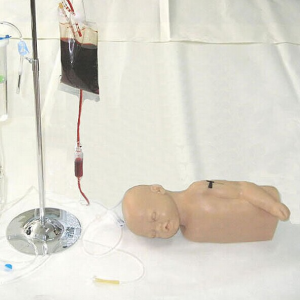ADA MED SUPPLY LIMITED
Phone:+86 19937901373
Tel:+86-0379-65160607
Email:adaanatomy@adaanatomy.com

Article tag: Baby puncture training model puncture training model

In the field of medical care, training in puncture skills for infants' head veins and arms is crucial. In order to ensure that medical staff can master this skill proficiently, we have introduced the baby's head vein and arm puncture training model, providing a real, safe and efficient training environment for medical staff.
This training model combines advanced simulation technology to accurately simulate the anatomical structure and blood vessel distribution of the baby's head veins and arms. The skin texture, blood vessel elasticity and anatomical features of the model are highly similar to those of real babies, allowing medical staff to feel a touch and feedback similar to real operations during practice.
The model has a variety of functional features to meet different levels of training needs. First of all, the model can simulate the conditions of the head veins and arms of infants of different ages and physiques, allowing medical staff to train in various scenarios and improve their response capabilities. Secondly, the model has adjustable vein depth and blood vessel fragility, allowing medical staff to set it up according to teaching needs and conduct different levels of training from beginner to advanced. In addition, the model also has a real-time feedback function that can display the accuracy and depth of puncture, helping medical staff correct errors in a timely manner and improve their operation level.
In practical applications, the machine's infant head vein and arm puncture training model has achieved remarkable results. Many hospitals and medical schools have introduced this model as an important tool for teaching and practice, providing more comprehensive and efficient training support for medical staff. Through repeated practice, the puncture skills of medical staff have been significantly improved, and the operation speed and accuracy have also been greatly improved.
In addition, the model also plays an active role in promoting R&D and innovation in medical technology. By collecting and analyzing the operating data of medical staff on the model, medical institutions and scientific research institutions can gain an in-depth understanding of the technical difficulties and potential problems in the puncture process, so as to carry out targeted technical improvements and innovations and promote the continuous progress of medical technology.
This infant head vein and arm puncture training model not only improves the professional skills of medical staff, but also reduces the risks in clinical operations. In real operations, medical staff can deal with various complex situations more calmly and ensure the safety and comfort of babies.
In short, the infant head vein and arm puncture training model of this machine has opened up a new path for the puncture training of medical staff with its high degree of simulation and functionality. I believe that in the near future, it will become an indispensable and important tool in the field of medical training and promote the sustainable development of medical care.